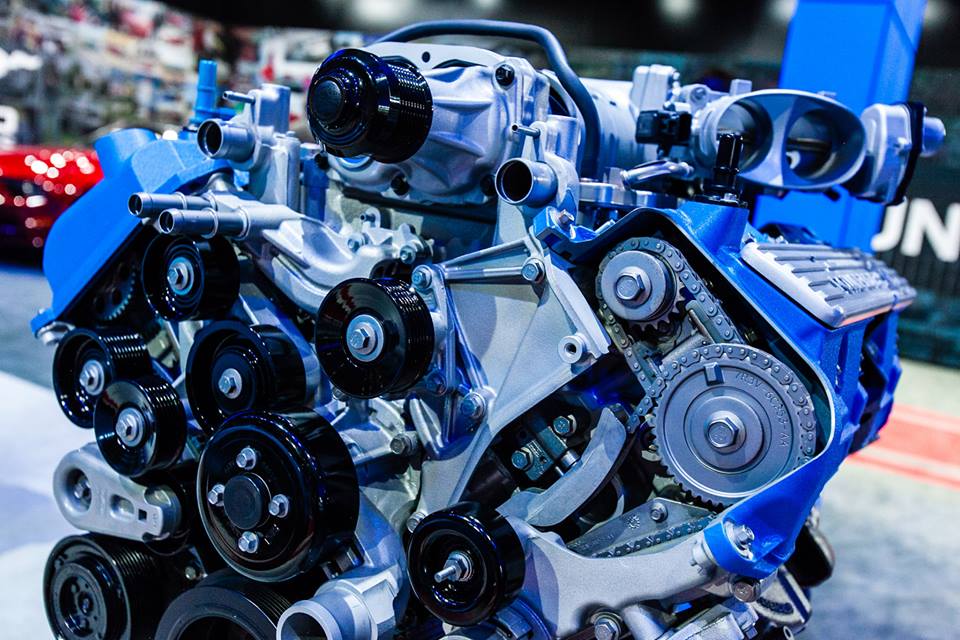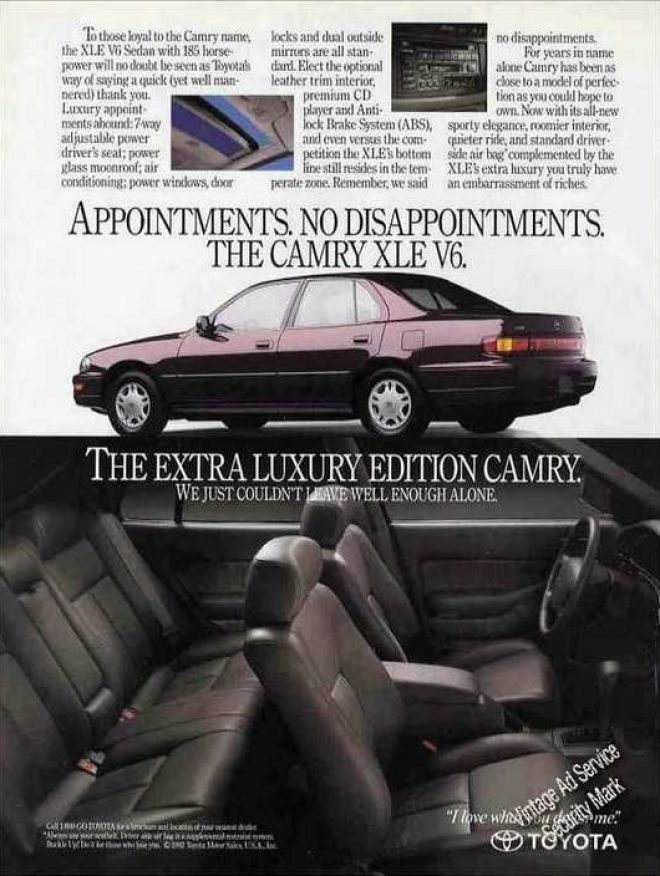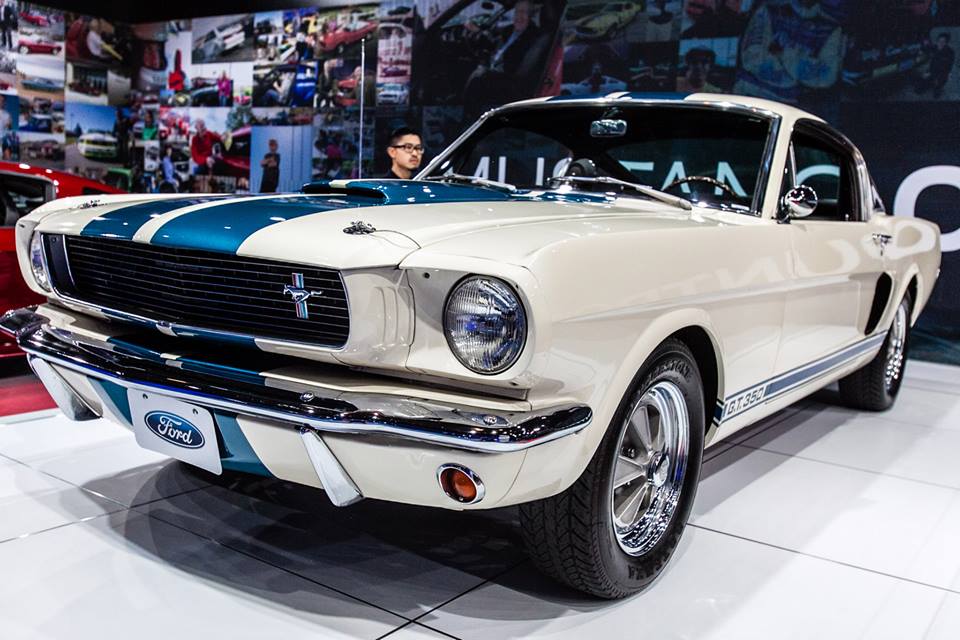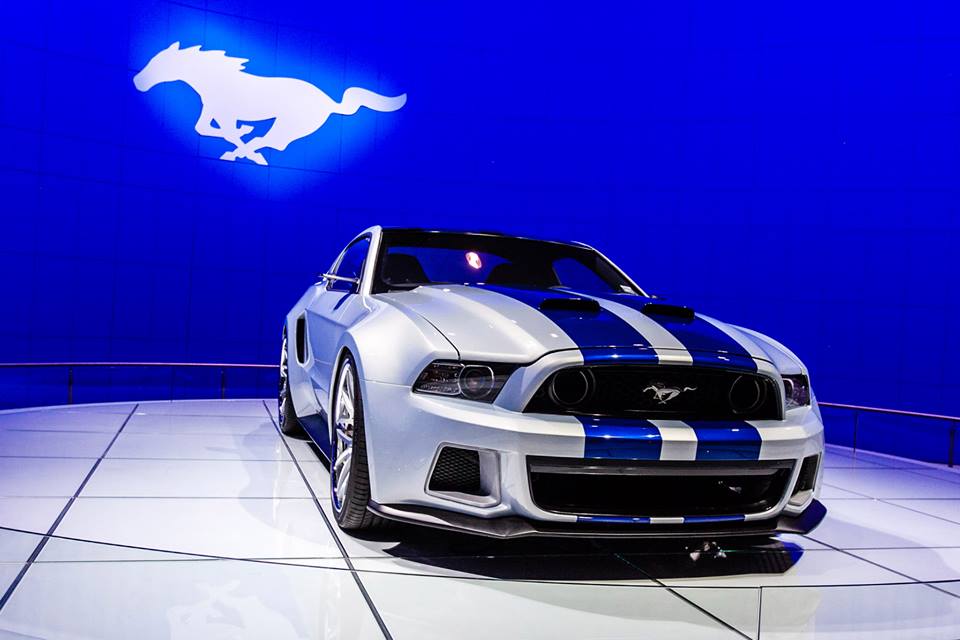Vision, School, & Work | Interview with Jim Farley CMO Ford Motors
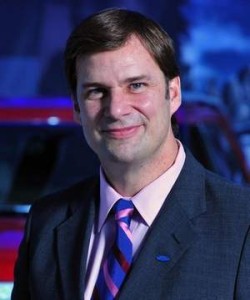 A few days until the LA Auto Show’s Connected Car Expo and my anticipation towards resting my rear in no less than $5M worth of plush exotic car seats was at an all time high. Then the message in the inbox arrived…
A few days until the LA Auto Show’s Connected Car Expo and my anticipation towards resting my rear in no less than $5M worth of plush exotic car seats was at an all time high. Then the message in the inbox arrived…
“Hey, we have a request to sit down and interview Jim Farley, Ford’s CMO. Are you going to be able to get there at 8 for his Keynote speech?”
I’m not a morning person; in fact, it’s 2pm as I’m writing this and I’m still in sweat pants, but for this, I’ll gladly be there. With our in-depth look at the Connected Car Expo, the topic of discussion was hugely conceptual. The Connected Car, where automotive and technology (outside of vehicle performance and earth saving “greenness”) collide. It’s something of a sci-fi fantasy scenario: Driverless cars that show up at the touch of a button. Integrated car-to-mobile communication that allows you to drive and plan your day without touching your phone once.
AND HERE WE WERE, W/ A CHANCE TO CHAT WITH ONE OF DETROIT’S DECISION MAKERS
As I sat quietly at CCE and listened to the openings and keynotes – LA Mayor Eric Garcetti, Ford CMO Jim Farley, and Google Maps for Business Director Tarun Bhatnagar, I came to realize what an interesting crossroads we’re sitting at.
We’re a long ways off from actualizing the future but there’s definitely a lot of work being put into getting us there safely. It’s a huge eco-system of automotive, tech, and regulations; and with anything industry-concept in nature, we understand the difficulty in giving concrete examples of projects in the pipeline.
So instead of rapid-fire inquiring Jim after his Keynote like many of my peers, I decided to take things back a notch, and focus on Jim’s story with the limited time we had. We talk vision, school, and work. And for the end, Jim names for us his favorite car in Ford’s stable. Enjoy!
All photos are taken from the 2013 LA Auto Show. For the full photo set, visit our Facebook.
WHAT’S ON THE HORIZON FOR AUTO AND TECH?
We begin our conversation with the high level. Since we’re at CCE, what exactly gets Jim excited about tech and where Ford is moving? Jim explains how he sees 2 very exciting and key transformations where tech & auto have converged; including what we’ll see in the next couple of years.
1) “On the software side of things (we’re not looking at driverless cars yet, that’s another topic in itself), in the next couple of years, we believe we’re at a tipping point with software experiences. Customers know what works well and are frustrated by the lack of innovation in the industry. Auto-interfaces are clunky, and when a lot of these big tech companies IPO’d, a lot of them developed products that were endemic to the car industry – navigation, social graphs, etc. As they became adopted by millions, they leap-frogged us in terms of capability.
Now, we’re at a point where large tech companies with huge R&D budgets are working directly with automakers to make functionality safe. There’s a strong need to customize UI and car companies are realizing their $700 navigation systems just aren’t going to sell as well as a free app from Google. We as car people are working towards building one-off accommodations that enable apps to work well in our cars while opening up our ecosystems to app developers.
That means opening up operating systems for cars and sharing data drivers are generating: Navigation destinations, throttle angles, commuting patterns, speeds, sharing all that to open these platforms. This topic, software making the car a better experience, is really exciting. Like mobile devices, it’s not just about talking (or traveling) anymore. It’s about meeting your friends, connecting to each other, interacting.”
CHANGING THE FACE OF AUTOMOTIVE MARKETING
2) “The second piece is the transformation of marketing thanks to the digital media companies. I appreciate the emergence of these important companies, who don’t just do search anymore. Facebook, mobile advertising agencies, even Pinterest and Twitter (though they’re not directly related to automotive). Anyone who’s gone IPO realizes their core business is now in advertising and their scale and targeting tools are good enough that they can compete with and exceed TV.
With automotive, advertising has always been a huge vertical (beverages, food, etc.). For us as marketers, the ability to transform our marketing to a personal ad that people can select into, based on their browsing experiences – this in turn allows us to transform our efficiencies as marketers.”
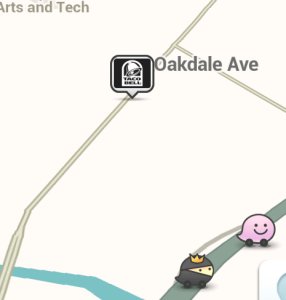 Immediately yellow flags are raised. Automotive, marketing, ad serving, navigation, visions of sponsored ads and commercials appear in my head – as you’re driving to your destination, countless commercials and pings show up on your navigation screen for nearby restaurants and businesses. I mention my worries to Jim, with Google-acquired Waze in mind.
Immediately yellow flags are raised. Automotive, marketing, ad serving, navigation, visions of sponsored ads and commercials appear in my head – as you’re driving to your destination, countless commercials and pings show up on your navigation screen for nearby restaurants and businesses. I mention my worries to Jim, with Google-acquired Waze in mind.
Jim discusses his personal thoughts on the matter. Companies like Google have made it very clear their goal is to move further from the simple “information in, information out” model and set up intuitive information, where apps can anticipate what customers want. Jim sees that day, but doesn’t believe the car would be a good mobile advertisement platform.
He assures me he and his peers in the auto industry are starting to develop principles around these ideas and knows for a fact that there’s no choice but to allow opt ins for these kinds of services.
“It’d be like a bad 80’s sci-fi where there’s a heads up display in your face, throwing nonsense at you. I believe car companies just won’t bother their customers like that.”
Jim goes on to explains if carmakers have learned anything from the tech sector, it’s to not monetize things. Take the Facebook model and acquire a billion users first, then let the data decide whether the commercial line’s been crossed. Car companies are in the same boat in that they want to create sticky ecosystems like Apple where all the apps add up to a great experience, but on the same token, they don’t want to make things so commercial that people will hate it.
“Customers will govern that”, according to Jim. “If an automaker took that heavy-handed monetization route, I think people will just delete it.”
THE CAR AS A PRIVATE SPACE
Jim continues our discussion with his thoughts on privacy and how it relates to advertising and marketing. He sees TV as “public” space – when you purchase one, you’re expecting advertisements. A mobile device, is an accessory to yourself, and it’s more private. You feel conflicted when you start to see ads. Cars, Jim believes, are even more personal than mobile in a way. It’s a private space and he’s confident that FORD’s principles wouldn’t turn their cars into newsletters.
“I’M KIND OF A GEEK” – FROM ENGINEER TO MARKETING EXEC
I direct our discussion to a more personal tone. One thing I’d noticed about Jim through his Keynote, crowd interviews, and our conversation here is how quickly his eyes light up when he hears the word “data”. Jim talks to us about his background.
“I’ve always been a car person, ever since I was a kid. I went to Georgetown and ran the computer lab then moved on to work at IBM. Honestly, I’m kind of a geek. After I went to grad school at UCLA for finance, I decided to get into the car industry because it was my passion. I had qualms about entering a field I loved so much but it felt right. At the end of the day though I feel like I’m more of an engineer.”
“When I started working in marketing , the lack of science in the discipline appalled me. We’d sit in meetings and people would state {I don’t like this, I don’t like that, the design of this car, I kind of like it, let’s go with it}. I remember thinking at the time {what do you know about minivans? You’re 27 years old and don’t have a family, what do you know about stow and go seats?}”
Jim’s always been attracted to data driven decisions from the beginning.
“Digital marketing turned the art of advertising into a science.”
Jim speaks highly on the idea of self-selected marketing. With these tools, he’s been able to see what people are actually opting into. With TV, if it was a terrible ad, he didn’t get the feedback needed. Jim rattles off a hilarious statistic: 10% of people watching primetime television are drunk or asleep. He then explains this was one odd quirk about him compared to his peers. Other marketers love judging ads and cars, Jim isn’t into that.
GOING INTO MARKETING SEEMED LIKE HIS WORST DECISION
According to Jim, he ended up at UCLA because it was the best school he could afford at the time. He chuckles as he reflects:
“I had little money, but it was an amazing experience. This was way before they had Anderson hall, so we took classes out of an old science building. I went to business school because I felt stuck – at IBM – selling personal computers. It wasn’t part of their core business since their focus was on selling big systems. I went to graduate school to change things up, met a lot of people, and made a decision to follow my passion.”
According to Jim, though he loved cars, going into marketing seemed like a disastrous decision with his engineer’s mind. But he had to start at the right place. He started work at Toyota in their future product division – on deck for him and his team, the insurmountable task of creating the Lexus brand.
Jim talks about working with Toyota’s product engineers – based out of Japan. For them, English was a 2nd language and there he was, trying to explain to them what customers in the US market want. Working in marketing helped him to find intersections between domestic and German luxury cars.
GREAT STRIDES WITH TOYOTA
“I loved that job,” Jim says with no hesitation. And for good reason; he did a lot of good for Toyota in their growing days in the US market. He proposed the first RX300 for production, and his group introduced the first unibody Rav4. At the time, the Camry was a staple car, so he worked to create the Sienna mini-van and Avalon luxury sedan off the Camry platform. It was a unique take at the time, to build different variations of one car and be able to sell them to different demographics of customers.
His more direct jump into Toyota’s marketing division came when Toyota announced they had an opening in advertisement. Jim recalls their words: “We need a geek” and the campaign was for the ’92 Camry. It was supposed to be a huge statement for Toyota to take on the Taurus and other cars in a domestic dominated market.
When Jim entered advertising he was shocked with how little data his colleagues were using to make decisions. Picture this scenario of an marketing board meeting – in throw spaghetti at the wall fashion:
“We’d be sitting in a meeting and there’d be four ideas on the wall. One guy would say {I like #2 – we have a dog, that’s a great dog, I think people like me would enjoy this car.} I’m looking around the room thinking to myself {This is absolutely insane, why is no one else seeing this?} That’s just how advertising was at the time.
Jim assures me that I’d have a hell of a time sitting in on their meetings. He explains some of the changes they made in regards to what he believes the true capital “M” in marketing stands for…
MARKETERS NEED TO INSPIRE PRODUCT TEAMS TO DEVELOP GREAT CARS – JIM’S NERDY SIDE SHOWS
To achieve this, a marketer’s first job was to figure out what consumers want. He explains how his team adopted archetype research from the gaming industry. With the 12 pronounced archetypes (rulers, magicians, etc.) they were able to work with designers to better understand the emotional state of customers when they see a physical product.
Jim explains this approach was new in the industry – by isolating an archetype they’re aiming for, they can direct designers to translate functional forms into ideas they’re trying to connect with. Organic shapes vs hard? Something new or familiar? And with each archetype there was a different vantage point. After crafting these stories they’d be able to create the advertising campaigns 5 years down the road and remain data driven the entire time.
THE FINAL (AND MOST IMPORTANT) QUESTION
“Jim, what’s your favorite car in the stable?” I ask to close our interview.
“I’ve always had a tough time answering this one. Honestly, I’m not a one car guy. And while I wholeheartedly believe the Fusion and MKZ (same platform) hybrids are the best cars we have in Ford’s stable… I’m still a Mustang guy at heart.
Jim chuckles, shakes his head, looks down, and back up with a child-like grin.
“With the pressures of our job – The Mustang is honestly the only thing I can get into and just truly be myself.”
And with that, we ended the interview. Personal note: I came into this experience with very little expectations or direction on where I’d like to take it. As a rare opportunity to interview someone who sits near the top of a household-name company, it was both a surreal and and humbling experience. A genuine thanks to Jim for taking the time with speaking to us at TechZulu!
*A quick note – in the time that I’d attended CCE, conducted this interview, and turned my notes into this article, Ford’s made the huge announcement for their much anticipated 2015 Mustang. My first impressions – It’s an aggressive, snarling beast with more “TRON” inspiration than “Gone in 60 Seconds” (1974).*










